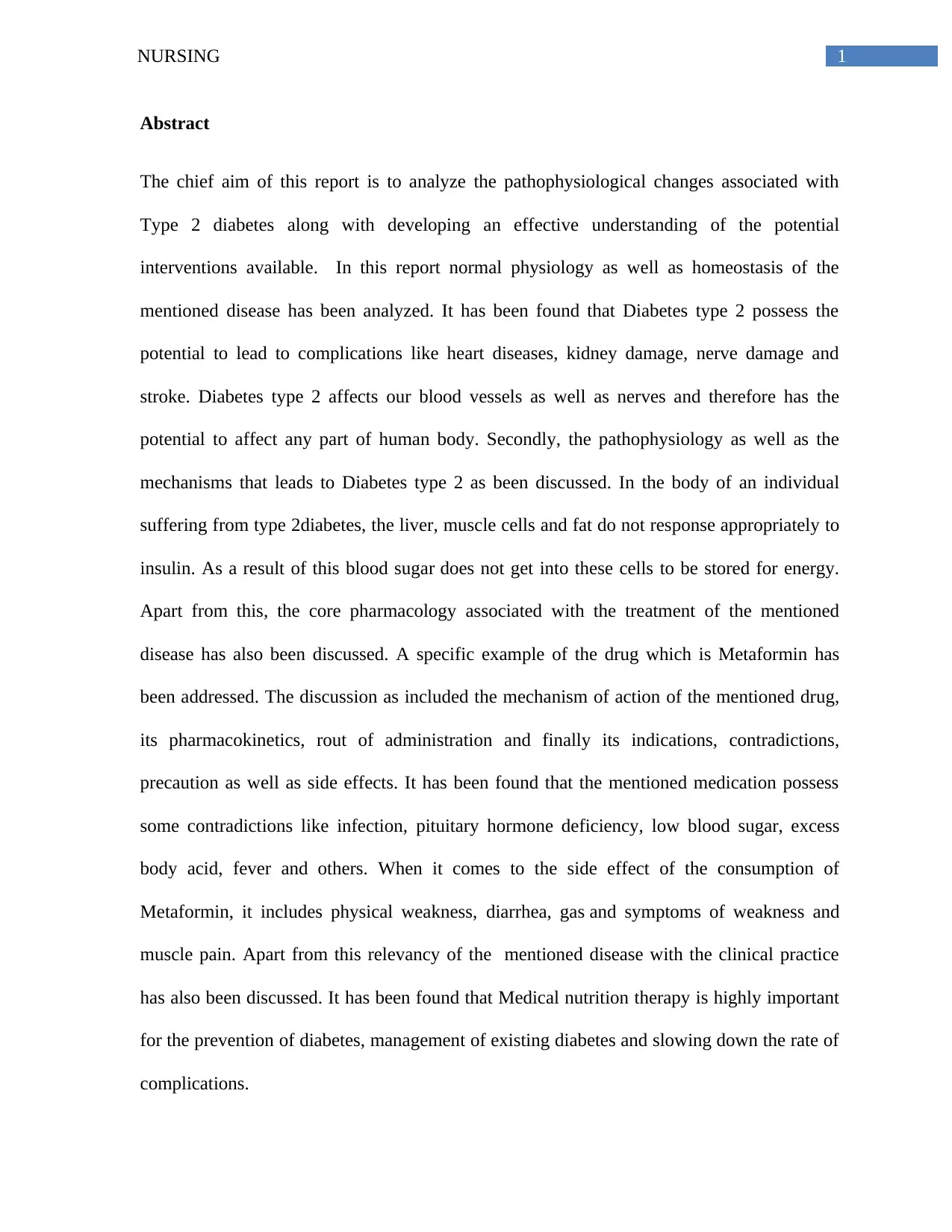Pathophysiology, Pharmacology, and Treatment of Type 2 Diabetes
VerifiedAdded on 2023/01/03
|4
|353
|83
Report
AI Summary
This report delves into the pathophysiology of Type 2 Diabetes, examining the mechanisms that lead to the disease, including the body's inability to properly use insulin. The report highlights the role of the liver, muscle cells, and fat in the development of the condition, and how they fail to respond adequately to insulin. The pharmacology section focuses on Metformin, detailing its mechanism of action, pharmacokinetics, administration, indications, contraindications, and potential side effects. Furthermore, the report discusses the relevance of medical nutrition therapy in preventing, managing, and slowing the progression of Type 2 Diabetes. This resource is designed to provide comprehensive information on the disease and its treatment, offering a valuable tool for students studying healthcare and related fields.
1 out of 4










![[object Object]](/_next/static/media/star-bottom.7253800d.svg)